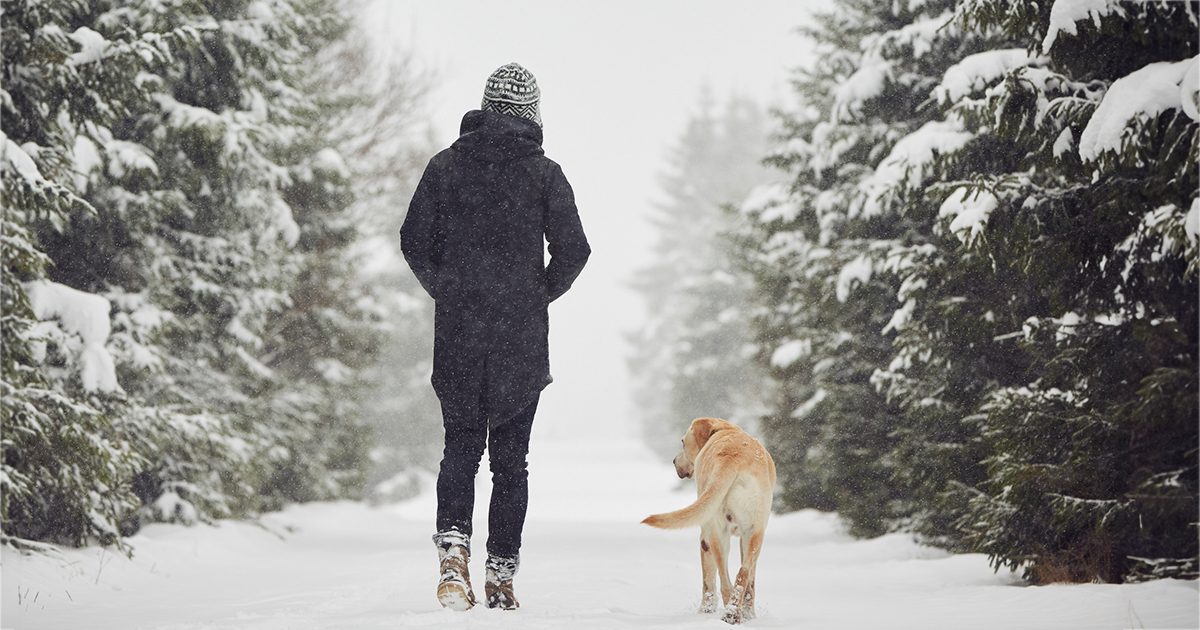Winter can be filled with joy. We visit loved ones. We celebrate holidays. We whip up cozy recipes. We decorate our homes. But many people have a tough time. The colder months can come with heavy feelings. And for some, those can last until spring.
About 5% of U.S. adults have a form of depression called seasonal affective disorder (SAD). SAD usually shows up during winter. But not always. It can also appear during spring and summer.
SAD can be tough to spot. For one, it can look a lot like other kinds of depression. But we’ll help you learn what to look for.
The good news? There are lots of ways to treat it. We’ll talk about ways to get support.
What is seasonal affective disorder?
Seasonal affective disorder is a type of major depressive disorder. It follows a seasonal pattern. “You usually start noticing it during the change in seasons,” says Giselle Alexander, LCSW, a licensed therapist and AbleTo program advisor. “It’s most common in winter.”
There are certain criteria for SAD. You need to have symptoms most of the day, for most of the week. These signs also need to last for at least 2 weeks. And they need to be present for at least 2 seasons in a row. So if you have symptoms this winter and last winter, you might have SAD.
SAD also impacts daily tasks in a big way. “You’ll see changes in your ability to function,” says Alexander. For example, it might be harder to get out of bed. It might also be tough to make a meal. Or maybe you don’t feel like seeing friends.

Achieve your mental wellness goals
AbleTo programs give you 24/7 access to tools, activities, and content tailored to your needs. Sign up or log in to start exploring.

What are common symptoms of SAD?
Every person is different. But there are still some common signs of SAD. They are:
- Feeling down or sad
- Feeling irritable
- Loss of energy
- Changes in appetite
- Changes in weight
- Sleeping more than usual
- Sleeping less than usual
- Feeling worthless
- Loss of interest in hobbies
Symptoms can also differ from season to season. Winter SAD may cause:
- Sleeping too much
- Eating too much
- Weight gain
- Pulling back from your social life
- Summer SAD may cause:
- Sleep issues
- Lack of appetite
- Weight loss
- Unrest
- Anxiety
Who is at risk for SAD?
Certain risk factors can increase the chances of having SAD. A few of them include:
- Being a woman
- Living in northern states
- Having depression
- Having bipolar disorder
- Having any other mental health disorder
- Having a family member with SAD
- Having a family member with another mental health disorder
What triggers SAD?
Experts still don’t know exactly what causes SAD. But research gives us a few ideas. One theory? The brain chemical serotonin. It promotes a positive mood. The brains of people with SAD have a tough time getting the balance right. Sunlight can help. Since there’s less sunlight in winter, serotonin levels may dip.
Low vitamin D levels may be another cause. Vitamin D may help make serotonin. “Sunlight is a key source of vitamin D,” says Alexander. “If you’re not going outside as much, you might see a change in mood.” This is why many people see SAD symptoms in winter.
Melatonin may also play a role. This hormone helps control your sleep-wake cycle. Too much might make you feel tired. It can also make you sluggish. Some research shows melatonin levels are too high in people with SAD.
How do health providers treat SAD?
SAD can be tricky to pinpoint. But it’s possible to get care. Here are 3 ways it can be treated:
- Light therapy. You can copy the effects of the sun with a special lamp called a light box. Some research shows using one can prevent SAD in people who have had it before. Want to give it a try? Talk to your medical provider, says Alexander. There are many types of light boxes. A provider can help you find the right kind. And they can help you use it correctly.
- Cognitive behavioral therapy. CBT can help you learn coping skills. It can also help improve mood. For SAD, you might address bummer thoughts about winter. Or, you could find ways to do more things that make you feel good.
- Medication. SSRIs have been shown to help reduce SAD symptoms. Some people take medicine only during their SAD season. Your provider can help you decide if this is a good option for you.
Can anything else help?
Feel-good habits can boost your mood. Try adding any of these to your routine:
- Get outside. Try to go outside every day — even in winter. “It’s a good idea to get some sun early in the day,” says Alexander. “It can help control your vitamin D and melatonin levels.”
- Move your body. Exercise can promote physical and mental health. Aim for 30 minutes, 3 or 4 times a week. It doesn’t have to be 30 minutes at once. You can break the time into smaller chunks.
- Connect with people. It’s hard to ask for help. But support from other people can work wonders. Try to reach out to loved ones when you’re down. A therapist can also help you manage SAD symptoms.
- Eat a balanced diet. Lots of fruits and veggies can help give you energy. Foods high in vitamin D could also help your mood. Give salmon and trout a try.
Dealing with SAD can be hard. Getting the right support matters. It can help you start to feel more like yourself. The first step is knowing the symptoms. Then you can ask for help.
Need help putting these tips into practice?
You may be eligible for virtual therapy, coaching, or on-demand self care from AbleTo. Each program is designed by clinicians and grounded in science. Sign up today and get the support you deserve.
By Ashley Abramson
Ashley Abramson is a freelance writer based in Milwaukee, WI.
Clinically reviewed by Sarah Dolling, LPC.
Photo by Chalabal/iStock. Individuals in photographs do not represent AbleTo participants.
The information featured on this site is general in nature. The site provides health information designed to complement your personal health management. It does not provide medical advice or health services and is not meant to replace professional advice or imply coverage of specific clinical services or products. The inclusion of links to other websites does not imply any endorsement of the material on such websites.


